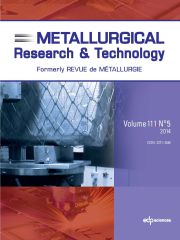Article contents
How physical modelling can improve Life CycleInventory accuracy and allow predictive LCA: anapplication to the steel industry
Published online by Cambridge University Press: 08 December 2009
Abstract
Assessing traditional iron and steelmaking processes from anenvironmental point of view and developing breakthrougheco-efficient processes for the future are major challenges forthe steel industry today. In the framework of the challengingEuropean project ULCOS, which stands for Ultra Low CO2Steelmaking, Life Cycle Assessment (LCA) was chosen toassess breakthrough processes that could be part of thefuture iron and steel making landscape and to comparethem to the reference classical integrated steelmill. To carry out such a study we propose a new methodologicalconcept which combines LCA thinking with physicochemicalprocess modelling. Physicochemical models were developed for each processesof the classical integrated steelmaking route in order togenerate the data required to draw the Life Cycle Inventoryof the route. Such a method bypasses the traditionaldata collection and brings accuracy to the inventory byintroducing rigorous mass and energy balances into themethodology. In addition it was shown that such an approach allowstesting and assessing different operational practices ofthe processes in order to optimise the use of energy andthe CO2 emissions, which showed that it can be used as apowerful tool for eco-conception of processes.
- Type
- Research Article
- Information
- Copyright
- © La Revue de Métallurgie, 2009
- 3
- Cited by


